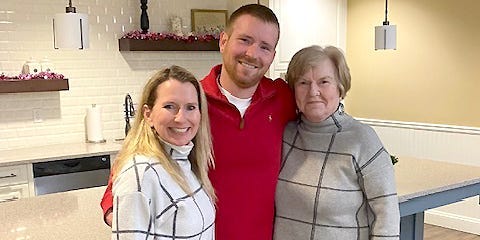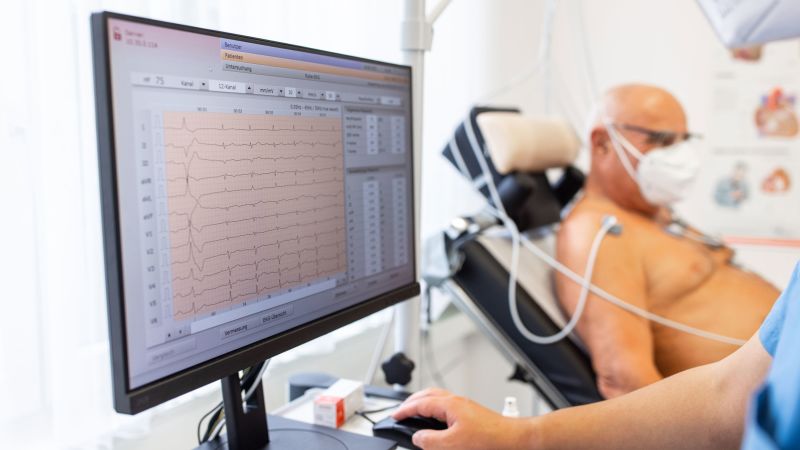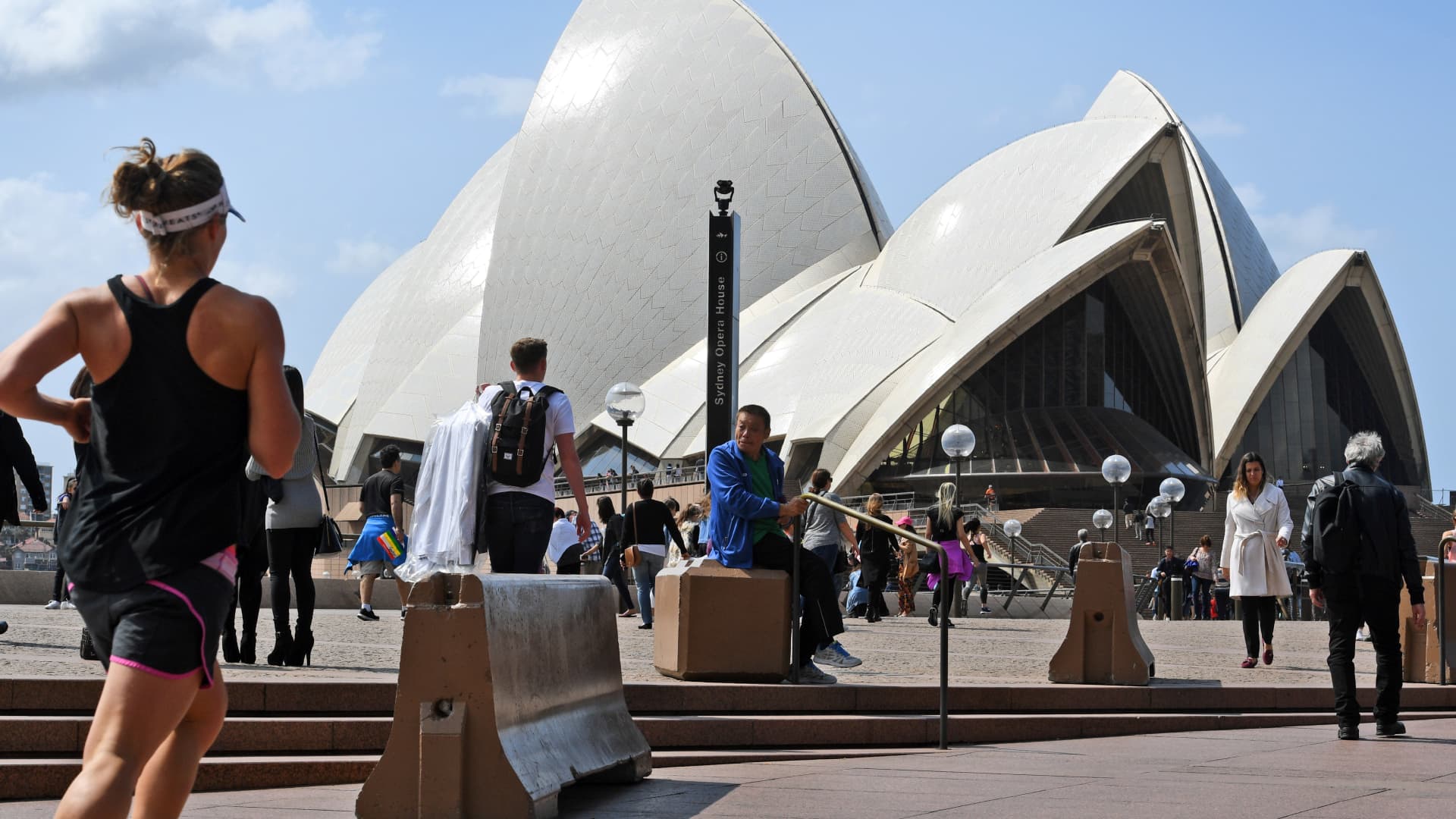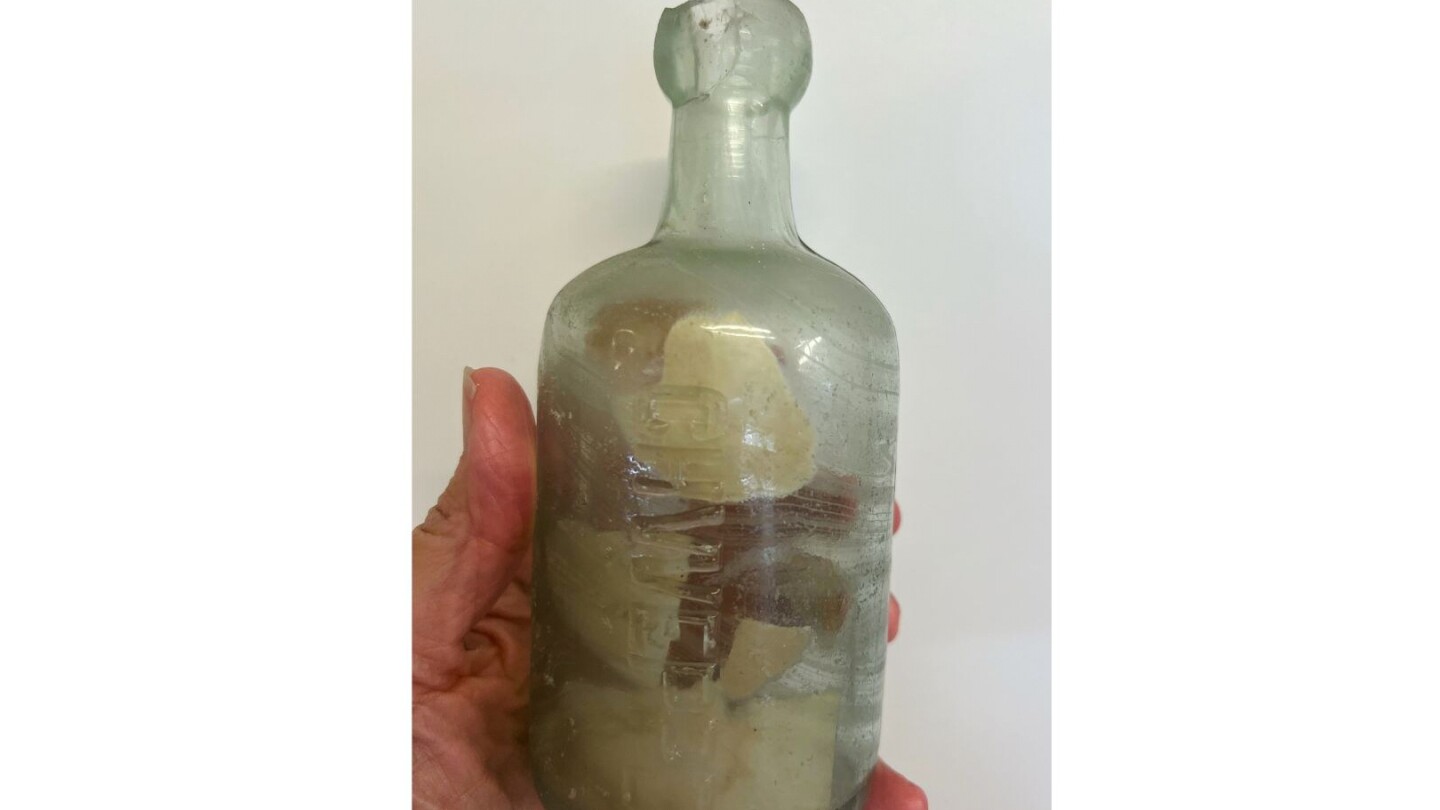Tourists sit on a bollard at the Sydney Opera House.
Afp Contributor | Afp | Getty Images
Australia’s inflation accelerated in the third quarter, with consumer prices rising 3.2% from a year earlier — the fastest pace in more than a year — the Australian Bureau of Statistics said Wednesday.
The increase topped the 2.1% rise in the second quarter and came in above the 3% forecast by economists polled by Reuters.
The ABS said the most significant price rises were in housing, recreation and culture, and transport.
Trimmed mean inflation rate, which excludes extreme price changes in consumer goods and services, rose to 3%, up from 2.7% last quarter. It was the first increase in trimmed mean inflation since December 2022, the bureau said.
The 3.2% headline rate pushed inflation beyond the Reserve Bank of Australia’s 2%–3% target band for the first time since the second quarter of 2024, underscoring the challenge policymakers face in taming persistent price pressures.
Following the data release, the Australian S&P/ASX 200 fell 0.76%, while the Australian dollar strengthened 0.21% against the greenback to 0.6596.
The latest inflation figure means that expectations of RBA rate cuts will be “almost certainly” pushed back, Josh Gilbert, market analyst at market services firm eToro said in a note.
He added that the RBA’s goal of bringing inflation under control will take longer than anticipated, and that further rate relief may still be some way off for investors.
“This reinforces that the disinflation process is stalling while bringing stagflation concerns into the conversation, especially if unemployment keeps picking up,” Gilbert added.
Diana Mousina, Deputy Chief Economist at AMP, said the latest figures were too high for the RBA to be comfortable cutting the cash rate next week.
As a result, the RBA is likely to hold the cash rate at 3.6% at both the upcoming November and December meetings, she added.
The RBA had cautioned in its September Statement on Monetary Policy that inflation for the quarter could come in “higher than expected,” citing sticky prices in housing and market services.
RBA Governor Michelle Bullock said last month that inflation in those areas was “a little higher than we were expecting,” though she stressed that it did not indicate that inflation was “running away.”
In August, the central bank had forecast that underlying inflation would continue to moderate to around the midpoint of the 2%–3% range, with the cash rate assumed to follow a “gradual easing path.”
Recent headline CPI readings for July and August came in above expectations for both months, at 2.8% and 3% respectively. September inflation figures stood at 3.5%, its highest since July 2024.
Australia’s central bank kept its policy rate steady at its last meeting, noting that inflation remained stubborn in some parts of the economy.
The country’s economy outperformed expectations in the second quarter, growing 1.8% from a year earlier, marking the fastest pace of growth since September 2023. It was higher than the 1.6% expected by economists polled by Reuters and the 1.3% seen in the previous quarter.
First Appeared on
Source link












